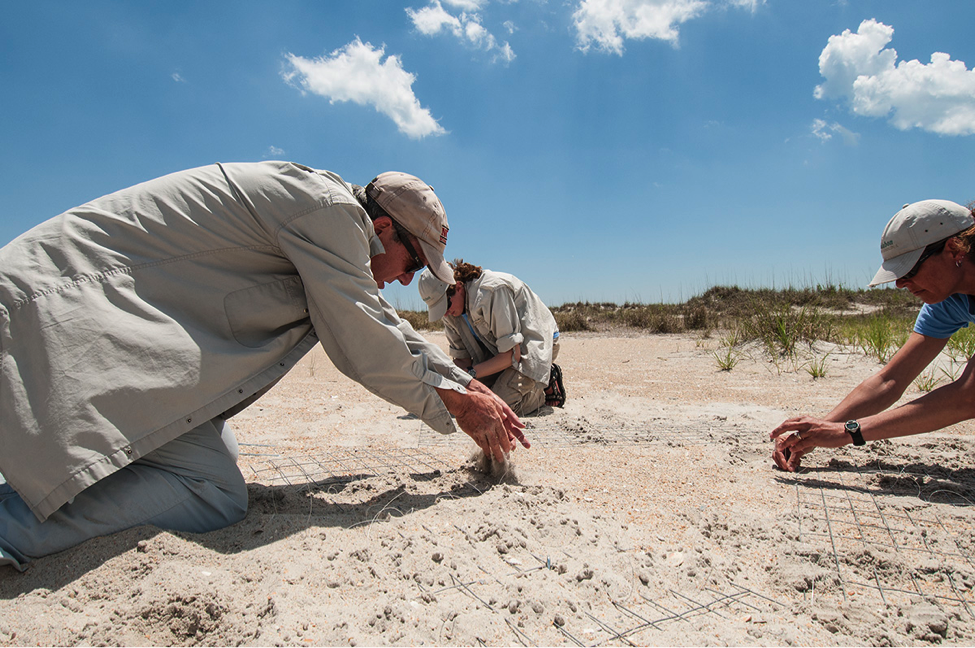Bird banding is a valuable tool in the study and conservation of many bird species. In this series, we’ll explain bird banding practices and explore insights gleaned from the observation of banded birds here on North Carolina’s coast and beyond. Our latest blog post details the exciting and unpredictable process of actually getting these valuable bands on our favorite birds!
Please welcome guest writer, Katharine Frazier
Recently I had the exciting opportunity to accompany Audubon coastal staff and volunteers on a banding trip out to some of the Cape Fear River islands. American Oystercatchers nest on these islands, which are monitored and protected by Audubon. We set out early from Carolina Beach State Park with the goal of stopping by several of these islands and, hopefully, banding a few oystercatchers.
Setting Traps at South Pelican Island:
Our first stop of the morning was South Pelican Island, where several pairs of oystercatchers have nests. Along with several others, I was sent to set up traps. Setting up traps isn’t too difficult, but I learned quickly that there are quite a few steps to the process.
First, we carefully placed two realistic oystercatcher decoys nearby. The sight of two enemy “oystercatchers” would serve as an incentive for the real oystercatchers to defend their territory.
The trap consisted of three rectangular wire grids, which we placed in a triangular formation. Each of these grids was outfitted with small loops of fishing line, which would serve as the actual trapping devices.
As we covered the grids with sand to camouflage them, we arranged the loops so they stuck up out of the sand, almost like the hoops used in croquet. When an oystercatcher enters the area to defend its territory, it will step through a loop, and when it takes the next step, it will pull the loop closed around its foot.

There's an app for that:
Once we’d buried the grids and secured the loops, it was time to put the final (and perhaps most important) part of the trap in place: sound.
We got out a portable call device, similar to smaller call devices or apps that allow users to play the sound of a bird’s call out in the field. We placed the unit a few feet away from the decoy, concealed behind a bit of vegetation, and then turned on the oystercatcher call.
Almost immediately, the high-pitched shrieks of oystercatchers filled the air and we scuttled a few hundred feet down the beach to see if our trap would work.
The parent oystercatchers, which eyed us warily from the water’s edge as we set the trap, sprang into action at the sound of the Hellfire’s pre-recorded oystercatcher calls. The two assumed attack position—bowed heads, puffed chests—and began to run up the beach in the direction of their nest, looking ready to reclaim their territory from the decoys.
From down the beach, we watched the whole scene through our binoculars with bated breath. Would our trap work?
Read our next installment in our bird banding series to find out here!
Learn more about Audubon North Carolina’s conservation efforts to protect the seas and shores our birds need to thrive.



